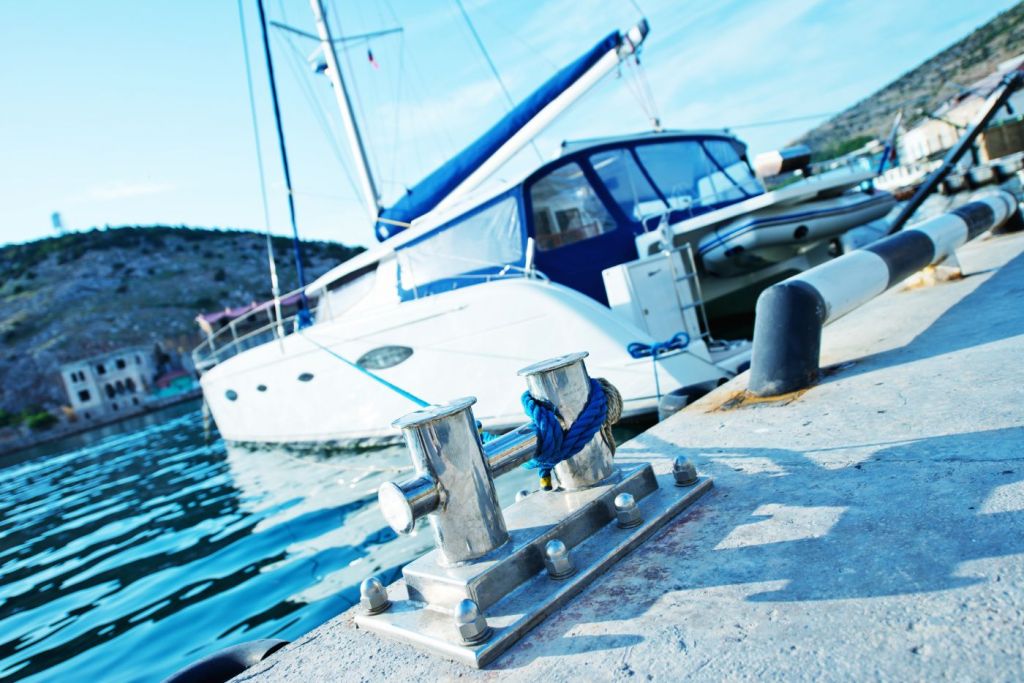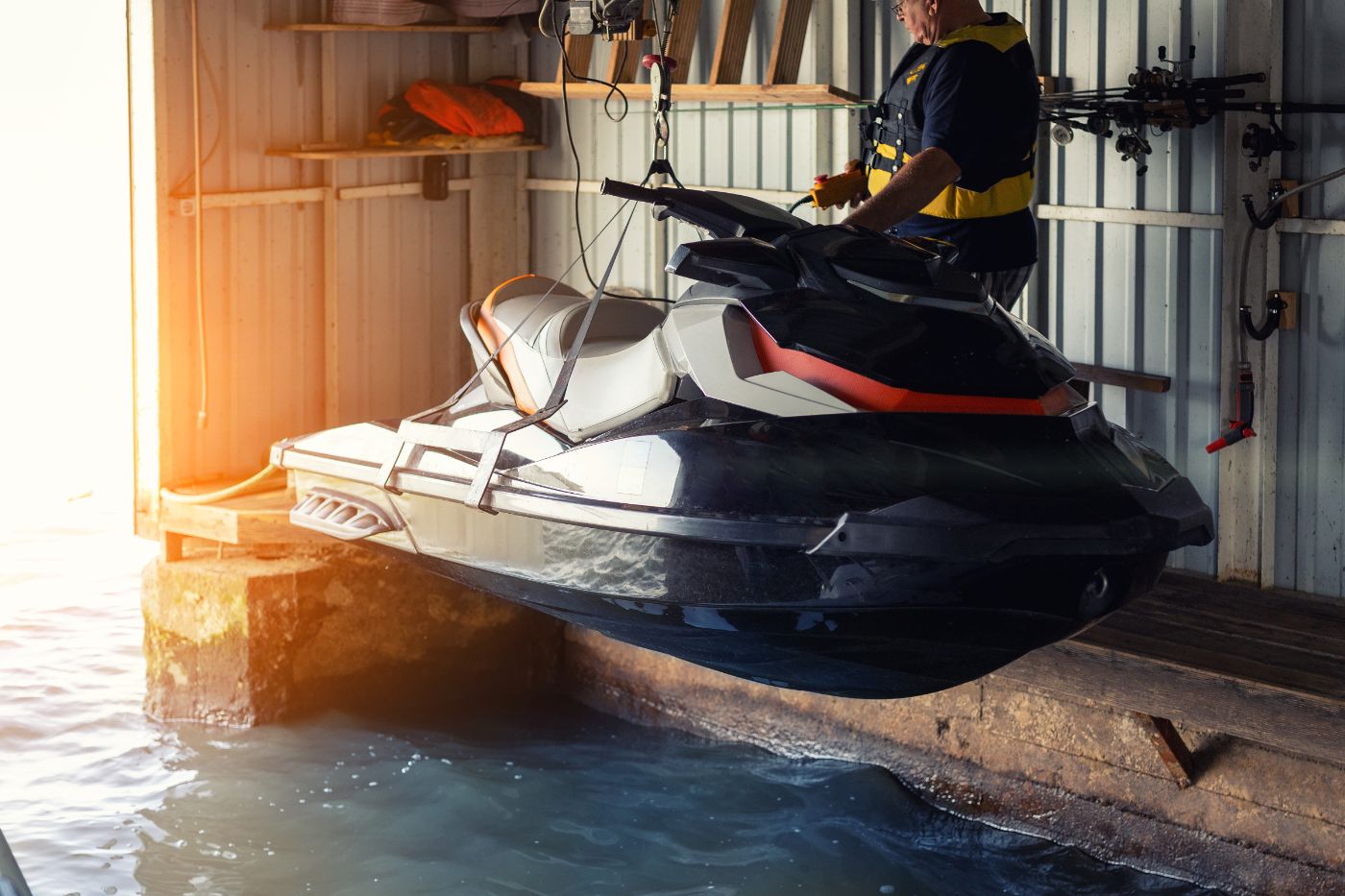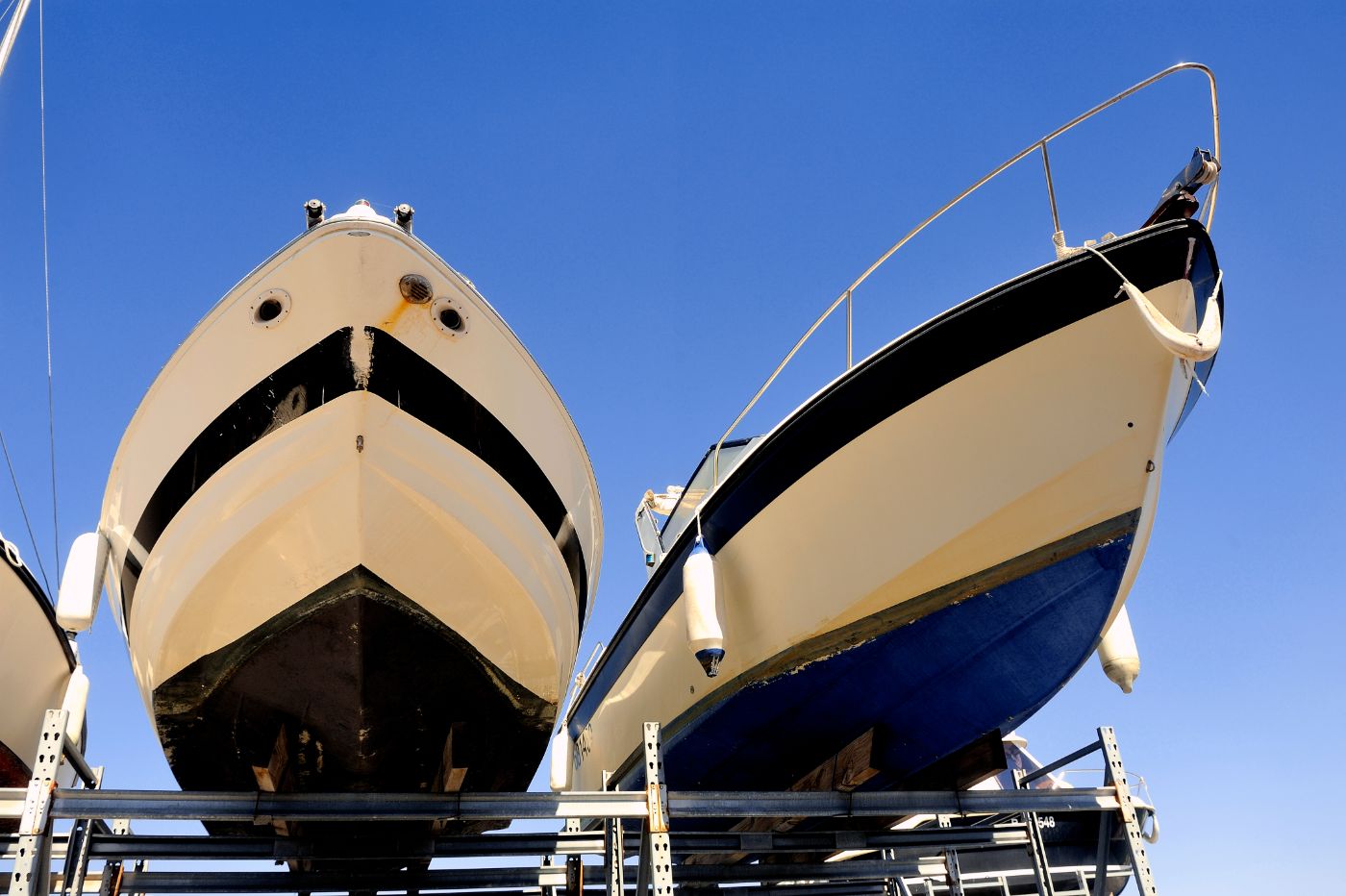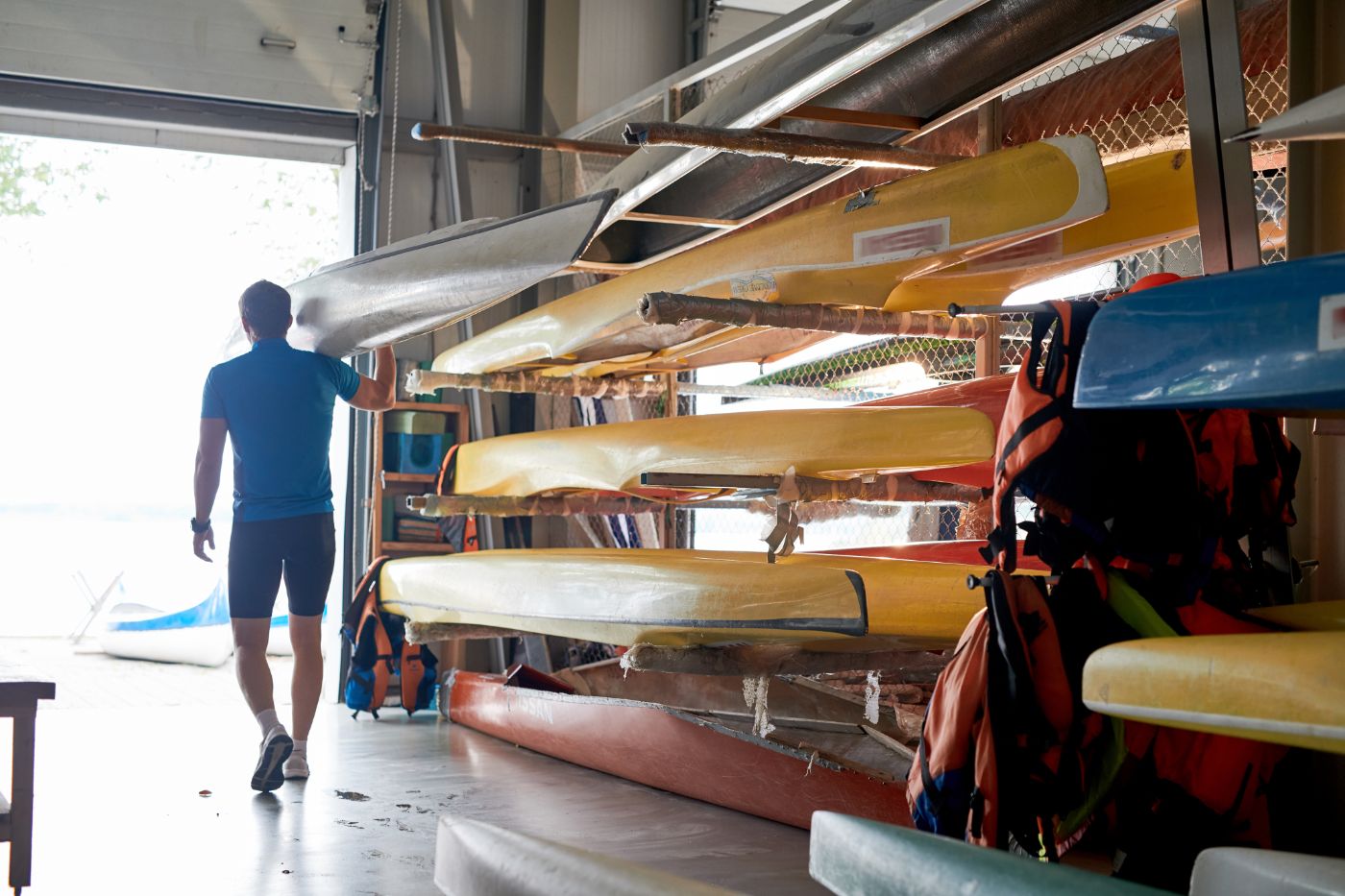Ultimate Guide to Boat Winter Storage Options
In this guide, we will explore the different boat winter storage options available to help you ensure your boat is protected during the winter months. From traditional indoor storage to DIY storage, each boat storage option has its pros and cons.
The options for boat winter storage are as follows: traditional indoor storage, heated indoor storage, shrink wrapping, boat covers, open yard storage, dry stack storage, boat mooring or in-water storage, and DIY storage.
If you have a large boat that cannot be stored indoors, what's a more affordable storage option for it? Find out below.
Summary
- Indoor storage: Often a more expensive option, but provides the ultimate protection in a climate-controlled environment.
- Outdoor storage: A more affordable choice, but be sure to invest in a high-quality cover to protect your boat from the elements.
- When deciding on a storage option, take note of your boat size, the location, and your budget constraints.
- Proper maintenance is crucial when storing your boat. Change the oil and gear lube, and protect the engine from freezing weather conditions.
- Pay attention to details like regular check-ups during the winter, removing water-sensitive items, and using a quality boat cover for protection.

On this page:
Where to Store Your Boat in Winter
Various boat storage options for winter include indoor storage facilities, outdoor shrink-wrapping, and even storing your boat on your own property.
| Boat Storage Option | Brief Overview |
|---|---|
| Traditional indoor storage | a good option for boats that need protection from the elements and require a controlled environment. It's typically the most expensive option but provides the most protection. |
| Heated indoor storage | ideal for boats that require a heated environment to prevent damage from freezing temperatures. It's more expensive than traditional indoor storage but provides added protection. |
| Shrink wrapping | a cost-effective option that provides good protection against the elements. It's a good option for boats that will be stored outside during the winter. |
| Boat covers | a more affordable option that provides protection against the elements but may not provide as much protection as other options. It's a good option for smaller boats that can be covered easily. |
| Open yard storage | a more affordable option for larger boats that cannot be stored indoors |
| Dry stack storage | a good option for smaller boats that can be easily stacked and stored on racks. It provides good protection against the elements but may not be suitable for larger boats. |
| Boat mooring or in-water storage | a good option for boats that can be left in the water during the winter |
| DIY storage | a more affordable option for those who have the space and resources to store their boat themselves |
Option 1: Indoor
This option involves storing the boat in a climate-controlled storage facility, such as a warehouse or garage. This provides better protection from the elements, but it is more expensive than outdoor storage.
Traditional indoor storage
One advantage of traditional indoor storage is that it shelters your boat from UV rays, rain, and snow. This type of storage typically involves parking your boat in a storage facility or in a large shed specifically designed to accommodate boats. It's important to know whether you should winterize your indoor-stored boat, as it depends on your region's climate and how well the facility is insulated.
Heated indoor storage
This can be especially helpful in colder climates, as it prevents freezing and potential damage to your boat's engine, hull, and other components. Heated indoor storage facilities maintain a consistent internal temperature, which reduces the need for extensive winterizing procedures.
Option 2: Outdoor
This option involves storing the boat outside, either on a trailer or on blocks. This is the most affordable storage option, but it leaves the boat exposed to the elements, which can cause damage over time.
Shrink wrapping
The process involves wrapping the entire boat in a thick, heat-shrink plastic that seals out moisture and prevents damage from harsh weather conditions. This option provides your boat with better protection than most standard boat covers. The cost of shrink wrapping varies depending on the boat's size and the provided services. The average cost is between $10 and $18 per foot, which can be a worthwhile investment for the protection it offers.

Boat covers
These covers come in various materials, sizes, and strengths, tailored to fit your specific boat type. When choosing a boat cover, it's essential to consider the fit, quality, and durability of the material. High-quality covers provide excellent water resistance and UV protection, ensuring your boat is well-protected during the winter months. Though not as effective as shrink wrapping, boat covers can be a more cost-effective choice when properly maintained.
Open yard storage
Some owners choose to store their boats in their backyard or at a more dedicated boat storage facility. While open-yard storage might save you money on storage fees, it exposes your boat to potential weather damage, dirt, and even vandalism. The combined use of a sturdy boat cover or shrink wrapping in this scenario is vital to ensuring your boat stays safe throughout the winter. Remember that proper preparation is crucial to the longevity of your boat in these conditions.
Option 3: Dry stack storage
This option involves storing the boat on a rack or shelf in a covered or uncovered storage yard. This is a popular option for smaller boats, as it maximizes space and provides some protection from the elements.
Dry stack storage can be either indoor or outdoor, depending on the facility. Indoor dry stack storage involves storing boats in a large, climate-controlled warehouse or building, while outdoor dry stack storage involves storing boats in a covered or uncovered storage yard. In both cases, the boats are typically stacked on top of each other on racks or shelves to maximize space.
Option 4: Boat mooring or in-water storage
This option involves leaving the boat in the water during the winter months. This is a convenient option for those who want to continue using their boats during the winter, but it can be risky due to the potential for damage from ice and freezing temperatures.
This is an outdoor storage option. However, some marinas may offer indoor boat mooring options, such as heated indoor storage slips. This option is typically used for smaller boats or boats that are used frequently during the winter season. Some marinas and boatyards offer in-water storage options where the boat can be docked in a slip or tied to a mooring buoy.
In-water storage can be a convenient option for boat owners who want to avoid the hassle of hauling their boat out of the water and storing it on land. However, it's important to take precautions to protect the boat from the elements and ensure that it is properly secured during the winter months. This may include adding extra lines, installing a winter cover, and performing regular maintenance to prevent damage from freezing temperatures and ice.

Option 5: DIY storage
This option involves storing the boat at home, either in a garage or covered area. This is a cost-effective option, but it requires adequate space and protection from the elements.
DIY storage involves storing the boat at home, either in a garage or covered area, so it can be either indoor or outdoor depending on the location. If the boat is stored in a garage or other enclosed space, it is considered indoor storage. If it is stored in a covered area that is not fully enclosed, such as a carport or covered patio, it is considered outdoor storage.
What to look for in a storage facility
When you're searching for the perfect boat storage facility, there are a few crucial factors to consider. Choose a location that provides a secure environment, accommodates your boat's dimensions, and offers reasonable pricing.
Security: Look for a storage facility with features like surveillance cameras, secure fencing, and access control systems. This will give you peace of mind knowing your boat is protected from theft and vandalism.
Size accommodations: Measure your boat's length, width, and height, and ensure the facility you choose can meet those needs. Sometimes, you might need to disassemble your mast for indoor storage.
Pricing: The cheapest option may not always provide the best security or space accommodations. Consider looking for facilities with different storage options, such as marina slips, outdoor boat yards, indoor "high and dry" storage warehouses, and self-storage. This will help you find the best deal suited to your specific needs.
Accessibility: Consider its proximity to your home, as well as nearby bodies of water, for convenience when you're ready to hit the water again. Also, check the facility's hours of operation and the frequency of access to your boat.

Preparing Your Boat for Winter Storage
First, thoroughly clean your boat, both inside and out. Remove any debris, dirt, and grime, and give special attention to the hull and deck. This will help prevent mildew, corrosion, and other issues during storage. Don't forget to inspect and clean the bilge as well.
Next, you should drain all the water from your boat, including the engine, water tanks, and any pipes or hoses. This will help to prevent damage from ice expansion when temperatures drop. If you have any onboard water systems, consider using antifreeze to protect them. Be sure to choose the appropriate type of antifreeze for marine use.
It's also a good idea to remove any equipment that could be damaged by cold temperatures, such as batteries, electronics, and soft goods like cushions and life jackets. Store these items in a dry and warm place until the boating season begins again.
Lastly, perform routine maintenance tasks like changing engine oil, replacing filters, and greasing moving parts. This will not only help to protect your boat during storage but also ensure it's ready for a smooth start to the next season.
Boat winter storage
- Refers to storing powerboats, motorboats, and other types of boats that are not sailboats
- Can be stored on a trailer or in a dry stack storage facility
- Generally requires less preparation before storage than sailboats
- Can be less expensive than sailboat winter storage
Sailboat winter storage
- Refers to storing sailboats during the winter months
- Requires a cradle or a specialized storage rack for storage
- Requires more extensive preparation before storage, such as removing the sails, rigging, and electronics
- Can be more expensive than boat winter storage due to the specialized storage requirements and additional preparation required

Different Types of Boats and Their Storage Needs
Each boat is unique, and understanding this will help you choose the right winter storage option for your boat.
Small boats
Kayaks, canoes, and paddleboards can often be stored in your garage or a covered outdoor area. Make sure they are properly cleaned and free of any debris before storage. You can use wall-mounted storage racks or ceiling-mounted hoists to save space and keep your boat safe.
Sailboats
These require more specialized care. To prepare your sailboat for storage, clean the hull, remove sails and rigging, and store them in a dry, cool location. Additionally, check for any signs of wear and tear and make any necessary repairs before storage. You may want to consider a dry-stack storage facility or marina with climate-controlled units for sailboats.
Motorboats
These boats need proper engine care before storage. Always winterize the engine by changing the oil and adding fuel stabilizer to the gas tank. To store powerboats, options include indoor storage facilities, boatyards, or using shrink wrap with a sturdy cover outdoors.
Inboard or sterndrive boats
Be sure to drain and flush the cooling system, change the oil, and fill the gas tank with stabilized fuel. Additionally, it's crucial to remove the battery from the boat and connect it to a trickle charger at home. Both indoor and outdoor storage options are suitable for these boats, as long as they are properly covered and protected.
Personal watercraft
Boats like Jet Skis need proper winterization as well. It's essential to flush the cooling system, drain the bilge, and fog the engine to prevent corrosion. Indoor storage or a secure outdoor location with a high-quality cover are suitable storage options.

Cost Considerations of Boat Storage
Boat winter storage costs in marinas start at $50 per foot per month; in storage facilities, at $10; in indoor storage, at $50; while outdoor storage costs around $5 to $50.
The type of storage—whether it's indoor, outdoor, or dry-stack storage—can significantly impact the overall storage expenses. Indoor heated storage is more costly than dry storage options, but it provides greater protection against weather elements. A smaller vessel may cost around $500 for both winterization and storage, while a larger boat can cost thousands of dollars to store.
Storage facilities in popular boating regions, such as Florida, may have even higher costs due to the demand for storage. It's important to factor in additional fees for boat storage, as they could add up and impact your budget. Examples of these fees include electricity charges, water, and sewage if your boat is stored in the water at a marina.
Here's an article where we expand on boat storage costs for 50+ locations.
Helpful Winter Boat Storage Tips and Hacks
Here are some useful tips and hacks to help you get started preparing your boat for winter storage:
-
Start by properly cleaning and inspecting your boat. Give it a thorough wash, remove any algae or other growth, and ensure every nook and cranny is thoroughly cleaned. This will help prevent damage and deterioration during storage.
-
Change the oil and gear lube of your boat's engine before storage. Old oil can contain contaminants that may damage your engine during the winter months.
-
Fill your fuel tank and add a fuel stabilizer to prevent condensation and fuel contamination issues.
-
Drain the water from your boat's engine, pumps, and water systems. Any remaining water can freeze and cause damage during the colder months.
-
To protect your boat from pests, seal any openings that can serve as entry points for critters. Close vents, windows, and doors; also, use mesh or covers to block any other potential access points.
-
Choose the right storage option for your boat based on your location, type of boat, and budget. Storage options include indoor, outdoor, and in-water storage.
Did you find the answer to your specific question?
👍 0 👎 0




Leave a comment